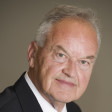Federal workers, retirees or their survivors have 12 more days to pick the health plan that will cover them and their families next year. Depending on your inertia level, that is either plenty of time or an impossible deadline to make such a potentially life altering decision.
What if you or a family member are hit by COVID next year? Or if a tractor trailer hits your vehicle? Does the catastrophic coverage limit of the plan mean your out-of-pocket costs will be minimal? Or are you in a plan that won’t pay until you’ve shelled out tens of thousands of dollars? Although many don’t think about a worst case scenario when buying insurance, experts say that should be your number one focus.
Have you checked to see if benefits and the list of preferred providers in your current health plan are the same as those in lower-cost options of the same plan? What do the terms high, standard and basic option mean? Is the more expensive high option always better? (Spoiler alert: The answer is NO). In some plans, high option has come to mean one thing: Same benefits, much, much higher premiums. If you are missing out, and paying way to much for the same coverage, whose fault is that?
Federal workers, retirees and their surviving spouses are fortunate in many ways. They have a large number of health plans to choose from. The government will pay much if not most of the premium. No one can be turned down for any reason. Full coverage continues in retirement, which is not the case in most private plans.
While the choice of 20 to nearly 40 health plans and options is bewildering, it is an effort everybody should make. Many federal agencies have made it easier for people to shop at work, on the clock, by subscribing to Checkbook’s Guide to Health Plans For Federal Employees. The online guide makes it easy for people to check out plans, benefits, networks, catastrophic coverage and, of course, premiums.
The good news, for you and me, is that Walton Francis is my guest today at 10 a.m. EST on Your Turn. You can catch it streaming here or on the radio in the Baltimore-D.C. area at 1500 AM. The show will also be archived on our home page so you can listen later. But not too much later. Remember, the countdown clock is ticking and you’ve got skin — literally and in money — in this open season. Francis is the long time editor of the Checkbook Guide, which, if your agency hasn’t subscribed for you, you can get by clicking here. You can save an additional 20% with the promotion code FEDNEWS.
Today’s show is going to be about your choices, why you should probably change plans this year and hidden things most people don’t know about their choices — but that they should know. If you have questions for Walt, please send them to me before showtime at mcausey@federalnewsnetwork.com.
Walt will give you expert advice and guidance. Enough to help you save up to $2,000 in premiums next year, and how to turn your health plan into an investment option worth $50,000 or more.
Here are some of the subjects he will be touching on:
- Ways to find plans to consider “side by side” with the plan you are in now.
- Using the FEHB as an investment option.
- Avoiding fatal mistakes and the five-year rule, which could disqualify you for FEHBP coverage when you retire.
- New Medicare Advantage options within the FEHB. These can be win-win choices for many feds.
- Best buys for seniors, young employees and people needing a specific coverage).
Nearly Useless Factoid
By Alazar Moges
The largest snowball fight consisted of 7,681 participants in Saskatchewan, Canada on January 31, 2016. The battle was held as a send off event for Team Canada as they headed to Japan for an annual professional snowball fighting competition.
Source: Guinness World Records
Copyright
© 2024 Federal News Network. All rights reserved. This website is not intended for users located within the European Economic Area.





